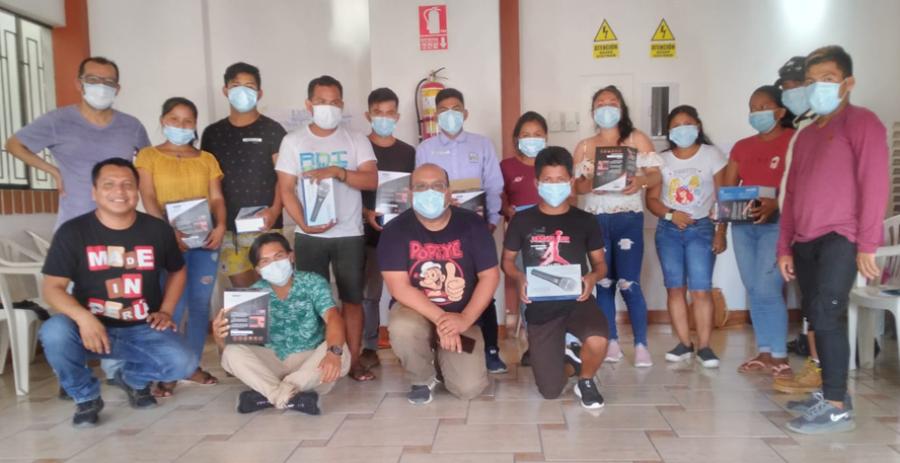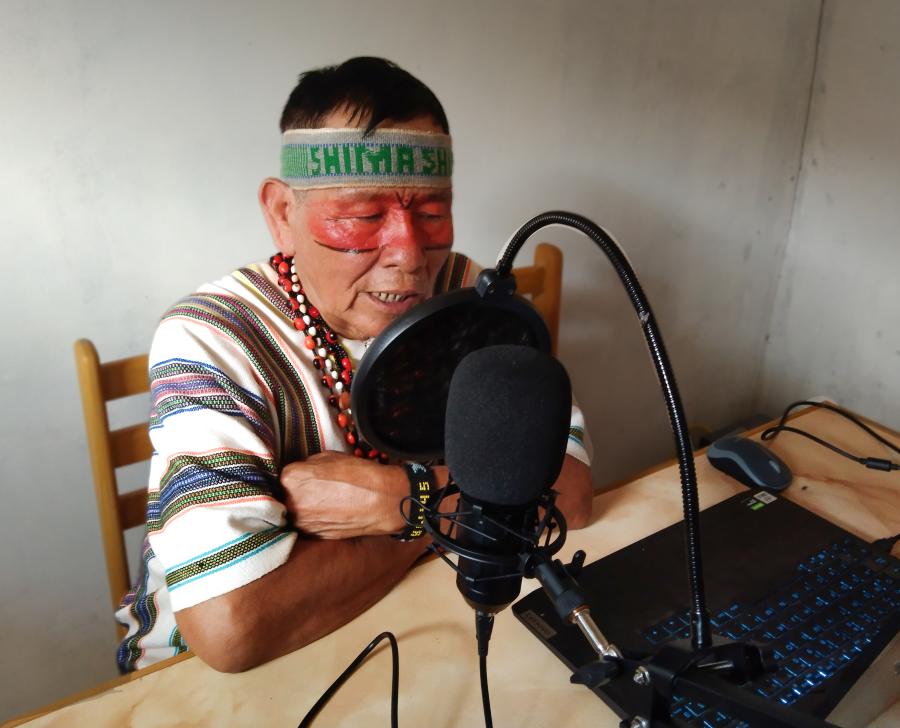

By Emily Sanders
Four days of violent conflict within a natural gas concession known as Block 108 in the Junin province of Peru led to the death of 25-year-old protestor Ever Perez Huaman. Huaman was allegedly killed by a gunshot wound to the abdomen, and many other protestors were injured and subject to tear gas fired at them by police. The area in conflict, whose ecosystems are threatened by Peru’s largest oil and gas producer Pluspetrol, is home to Indigenous Chanchamayo communities.
Argentinian company Pluspetrol had been conducting exploratory activities since last year under a concession from the Peruvian government. In response to the company’s myriad violations against local peoples’ rights, a mass of protestors began occupying Pluspetrol’s storage area and blocked a stretch of highway on February 10, 2015. According to a leader of the local Indigenous federation ARPI, Lyndon Pishagua, over 800 protestors were involved in the action—though local Indigenous communities did not participate, due to a dispute with the protest’s organizers who are mainly from outside the Junin province. Though the protest was spurred due to contamination of the community’s rivers and soil due to natural gas exploitation on Indigenous lands. Pluspetrol has become infamous for causing environmental harm to Indigenous communities in the country’s northern Amazon due to the company’s careless oil extraction methods. In keeping with their behavior in the north, the company has denied responsibility for environmental damage in Junin.
Despite the violence that ensued, the unwavering dedication of Indigenous communities finally convinced the state of Peru to ask Pluspetrol to vacate the concession. The government has also been called upon by Energy and Mines Minister Eleodoro Mayorga to evaluate the contract it made with Pluspetrol for natural gas exploration in 2005. In response to protests and proposed inquiries, the company still purports to have met all legal requirements including having obtained consent the Chanchamavo peoples in the affected town of Pichanaki, Junin. The Chanchamayo state that a proper consultation and dialogue did not take place.
Meanwhile, negotiations are underway between Pluspetrol, the Peruvian government, and Indigenous communities along four watersheds in Loreto regarding the expiration of Pluspetrol’s oil concession formerly known as Lot 1AB, in August of 2015.
After four decades of flagrant pollution, public health crises, and the routine devastation of their ancestral lands by oil projects, the Indigenous communities of the Peruvian Amazon, including the Quechua, Achuar, and Kichwa, among others, have demonstrated that they will not continue to tolerate corporate abuse without a fight.
Starting on January 24th, nearly 400 members of the Achuar and Kichwa communities interrupted production at 14 oil wells, preventing the output of over 3,000 barrels of oil a day. Kichwa men, women and children have been protesting along the River Tigre, using cables to impede oil boats from passing in hopes of preventing further operations in the Amazonian forest. Pluspetrol has lost over 2 million dollars to date since communities started mobilizing.
This type of protest, and the abuses that necessitated it, is not an isolated incident. Since the legacy of oil drilling in the Peruvian Amazon began in the 1970s, pioneered by US-based company Occidental Petroleum (Oxy), Indigenous lands have been destroyed by innumerable crude oil spills, gas flares, and 9 billion barrels of production waste waters containing highly toxic heavy metals such as barium, lead, chrome, cadmium and arsenic dumped directly into the community’s sources of fresh water. In Block 1-AB, which Pluspetrol acquired 15 years ago, a government study found that all but 2 out of 199 people making up the seven affected communities showed blood-cadmium levels dangerously above the standard. Various Achuar communities have been shown to experience tumors, skin ailments, miscarriages, chronic illnesses, and severely high levels of heavy metals in their blood streams. As the government and Pluspetrol still fail to remedy these issues, affected Indigenous peoples confront the daily dilemma of where to find clean food and drinking water. In addition to declining health, these communities face dwindling resources: they face the contamination of streams and rivers they relied on for fishing and the pollution of groundwater under agricultural fields which causes crops to wilt and fail. Hunting grounds and ecosystems once teeming with biodiversity are now scarce, as animals are threatened with the loss and contamination of their habitats.
Indigenous leaders have argued that the government and Pluspetrol have failed to appropriately consult or acquire consent for developments, neglected to install effective plans for the remediation and prevention of environmental contamination, and have not issued due compensation to impacted communities for use and ruination of their land which contradicts Article 28 of the UN Declaration on the Rights of Indigenous Peoples requiring them to do so.
Unfortunately, despite the establishment of Indigenous land rights in Peru meant to prevent such confrontations, the ongoing battle against State and corporate collusion continues to emphasize that these rights are not being implemented effectively. Though the Peruvian State has acknowledged some Indigenous lands with “Native Community” titles, in the example of the Achuar, these titles only cover a third of their ancestral territories, leaving the landscape shared by 40 Achuar communities still subject to unregulated oil drilling. Though ILO Convention 169, ratified in 1994 by Peru, declares the right of Indigenous people to free, prior and informed consent over development projects, and Articles 89 and 149 of Peru’s own Political Constitution state the right of native and rural communities to self-determination, these statues have been chronically violated by oil concessions made without Indigenous consent.
Still, Indigenous communities have developed successful strategies for resistance over the more than four decades of abuse they have been subjected to. In 2007, the Achuar filed a class-action lawsuit against Oxy, the concessions original owner, demanding compensation and remediation of the damage left by dumping 850,000 barrels of toxic produced waters every day for decades, and in 2010, won an appeal for the case to proceed in U.S. Federal Court. Along the Pastaza River, communities have trained themselves to become environmental monitors, observing and recording oil spills.
Starting explorations in Peru in 2004, Canadian oil company Talisman Energy also began drilling wells in Block 64 on ancestral Achuar land in the Pastaza and Morona river basins in spite of fervent opposition. Though they never obtained free, prior and informed consent from the majority of communities living in Block 64, Talisman became its sole operator in 2007. In response, Achuar leaders traveled to Talisman’s annual General Shareholder Meeting at their headquarters in Calgary, Canada, to demand recognition of their rights. Their persistence was rewarded in September 2012, when Talisman became the fifth company to discontinue drilling in Block 64 and to withdraw from the country.
Despite these accomplishments, the Peruvian government has pledged to renew the concession in Block 1-AB, which is due to expire in August 2015. Even so, after decades of corporate pollution allowed for the sake of lower production costs, the Indigenous peoples of Peru continue to demonstrate their capacity and resilience in the hopes that their rights to traditional land, compensation, and survival will ultimately be recognized.



